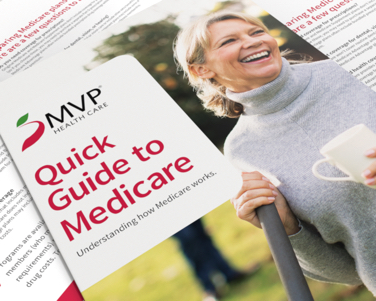Navigating the Digital Ecosystem: A Guide for Regional Health Plans

The digital marketing landscape is evolving rapidly, presenting both opportunities and challenges for regional health plans. Unlike national brands with extensive budgets and broad reach, regional health plans navigating the digital ecosystem must do so with strategic precision to maximize their investments and connect with the right audience.
The Challenge: Breaking Through in a Competitive Digital Market
Regional health plans face increasing competition in local markets. They also face the same challenges that national payers face, including:
- Shifting consumer behavior and media habits
- Strict regulations and tracking limitations, as set by the Centers for Medicare and Medicaid Services (CMS)
- Increased spend from competitors competing for the same small, niche audience
- Constant digital changes and enhancements
Additionally, many demand-side platforms (DSPs) and media providers promote themselves as all-in-one solutions, promising premium inventory and guaranteed reach. However, for regional plans with smaller, more targeted audiences, achieving meaningful results requires a more hands-on, tailored approach.
Scaling Smartly: The Right Digital Strategies for Regional Plans
Unlike national brands, regional health plans must be deliberate about their digital investments. Here’s how they can make the most of their resources:
1. Hyper-localized targeting with smart optimization
Platforms like Meta, Google and DSPs offer precise targeting capabilities, but smaller audience sizes can pose challenges. When an audience is too narrow, platforms struggle to optimize efficiently, leading to ad oversaturation and ineffective spending. Some opportunities include:
- Adjusting targeting to balance audience specificity with scale
- Focusing on broader brand messaging to drive awareness, while using site content to deliver more detailed and localized product messaging
- Leveraging compliant first-party data collection and utilization for personalized marketing
2. Beyond CPM: Focusing on ROI-driven metrics
CPM (Cost-per-thousand impressions) is often a misleading metric for regional plans. Trying to match national CPM benchmarks can lead to low visibility or poor ad placements. Instead, success should be measured through more meaningful key performance indicators (KPIs), including:
- Consumer engagement – Measuring time on site, content interactions and repeat visits
- Conversions – Tracking form submissions, calls and enrollments instead of just clicks
- Lead quality – Focus on leads that show real intent and align with target demographics, rather than just volume
To reach high-value prospects, regional plans must increase bids strategically and ensure a consistent, cross-platform experience for potential members.
3. Creating a cross-channel digital presence
A well-coordinated digital strategy blends paid, owned and earned media to guide potential members through every stage of their journey. To maximize impact, brands should leverage multiple touchpoints across search, social, display, video and native.
Consider leveraging display and CTV to build brand awareness and then follow through with social media ads and organic posts to encourage overall engagement. Ultimately, the goal is to generate conversions through a connected organic and paid search strategy. At every step in the process, you should consider the overall customer journey and focus on reaching your target audience with relevant content, when and where they consume media.
By aligning these efforts, brands ensure a consistent presence across digital channels, improving reach, engagement and conversions while creating a seamless user experience.
Looking Ahead: What Regional Plans Should Watch
The digital space is shifting fast. Regional health plans should be prepared for:
- Meta’s evolving ad restrictions – Platforms are making lead tracking harder for healthcare advertisers.
- First-party data strategies – The decline of third-party cookies means plans must build their own data assets.
- The changing role of display advertising – Once focused on click-through rates, display ads are becoming more of a branding tool, similar to traditional print advertising.
- Updates to Google search – Changes to broad match and Google’s increased use of AI in campaign management are reshaping how targeting and bidding strategies perform, requiring close monitoring and testing by marketers.
We’ll be covering all of these topics and more on our blog. For regional health plans, navigating the digital ecosystem requires a tailored, performance-driven approach. Instead of chasing low CPMs, success comes from strategic investments in high-value audiences, smarter cross-channel engagement, data-driven decision-making and thoughtful consumer journeys.
Stay tuned for our next post, where we’ll dive deeper into rethinking CPM and optimizing for ROI in healthcare marketing. Got questions on navigating the digital ecosystem as a regional health plan? Reach out to Media Logic today.









